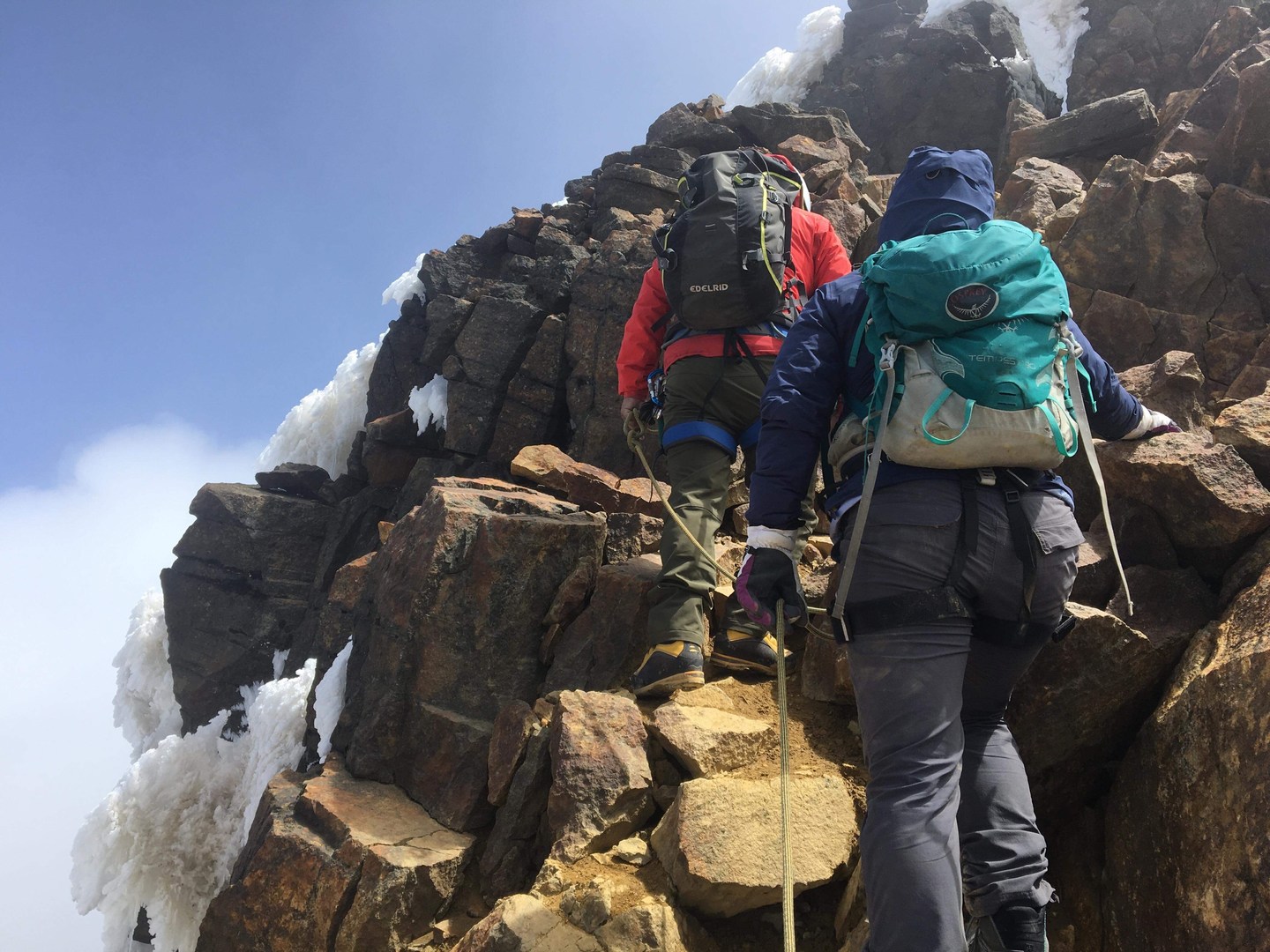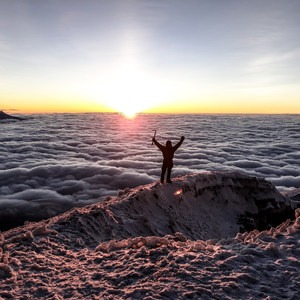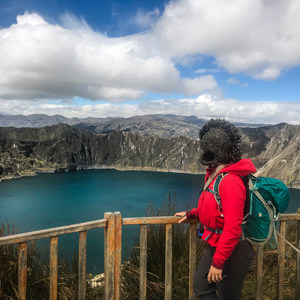You are here
Climbing Iliniza Norte is a great goal for beginner mountaineers/climbers heading to Ecuador. It is also incredibly popular as an acclimatization climb for those wanting to push even higher and climb on one of Ecuador's infamous glaciated peaks like Cotopaxi or Cayambe. Though generally done as one long day, the hike can be broken up into two days, as there is a small refuge in the saddle between Iliniza Norte and Iliniza Sur.
Though techincally a Class 3 scramble (YDS), much of Iliniza Norte is a gorgeous hike through alpine grasslands and polylepis trees. The route begins at Parqueadero La Virgen (possibly the world's most beautiful parking lot) at an elevation of 3,950 meters. The hike meanders up a set of switchbacks before cresting the last bit of incline to meet the volcano's saddle. The tiny refuge nestled here (at 4,750 meters) is a great place to stop, warm up, and eat lunch. Hot coca tea can be purchased for only a dollar and is a special treat when the weather outside is frigid and stormy.
Most guides will have climbers don their helmets and harnesses before setting out along the ridge proper. The weather can change in an instant in this region, so it's advised to put on all necessary layers and waterproof alpine gloves as well. If you're lucky and you climb on a clear day, you'll see incredible panoramas of the southwest ridge of Iliniza Norte, and looking back, you can catch glimpses of her higher, snowier sister peak, Iliniza Sur.
The route follows several stone catwalks with the occasional Class 3 section to get over a ledge before continuing on. Just before "Paso de Muerte" (the pass of death), guides will check in and see how climbers are feeling before pressing onward. They will likely have you tie-in as a rope team even if you're an experienced climber, as the next section is loose, steep, and very exposed.
Continue following the ridge up and to your right, finally coming upon the steep summit gully. Many websites list it as a 5.3 simulclimb, but my group found it to be easy and relatively not-exposed Class 4 at most. The summit itself is an small, airy ledge with a metal cross and a few delicately arranged trinkets that pervious climbers have left. Snap a few photos, enjoy the stunning views, and then descend down the way you came until you reach the bottom of the gulley.
From here, a lot of guides will opt to take climbers down a less technical scree slope that is supernaturally yellow and heaven on the knes after a long, rocky ascent. Wobble and scree-ski your way down until the route intersects a trail slightly off to the right. From here you'll meander through lush, green polyepis trees and exotic grasses and flowers until you hit the trail you arrived on and take it all the way back to the parking lot.
It's a fantastic Class 3 objective and a great first peak for those curious about the thrills and challenges of high-altitude peak bagging!
Logistics + Planning
Current Weather: Powered by Dark Sky



























Comments
Sign In and share them.